If you love apples, you’re going to love this homemade apple butter recipe. The flavor is fabulous, of course, but the fact that it’s a mix-and-forget it crockpot recipe makes it easy enough for even the busiest of people to tackle!
Originally published June 2019; this post has been updated.
The Handcrafted Pantry

Ready to DIY your pantry with more wholesome ingredients? Check out my ebook, The Handcrafted Pantry! Filled with delicious recipes for some of your favorite condiments, snacks, and toppings, it’s the guide you need to start skipping packaged products and embrace homemade.
Apple Butter Recipe for Canning
Apple butter has been a favorite of mine since I was a kid. I love that I can make it without added sugar.
Since this apple butter needs to be reduced into a thick spread, slow and easy is the way to do it. You can cook it on the stovetop (see notes below) but if you have a slow cooker, it’s really the easiest way to make it.
Cooking it in a slow cooker (aka a crock pot) means lots less hands on time, but there are instructions for making it on the stove top, too.
Just What is Apple Butter?
First, let’s be clear: It’s not butter. There’s no butter at all in this recipe, in fact.
5 Easy Steps to Transform Your Pantry!
Ready to switch from store bought to homemade? Let me help you make some changes! Grab my FREE five-part guide to getting started.
Rather, it’s a fruit spread that is made by cooking apples down until you achieve a concentrated, spiced spread perfect for topping toast or muffins.
One of the great things about making homemade fruit butters is that you can make them entirely without added sugar, trusting the fruit to provide enough sweetness. This is true of apple butter, too.
Ingredients
Apples — Choose fresh, fully ripe apples. I’m a fan of Gravenstein apples, but if you don’t have those available, this recipe can be made with any type of apple. Golden Delicious apples and Gala apples will make a sweeter spread; Granny Smith apples will be a bit more tart. Go here to read more about some of my favorite apple varieties for use in recipes.
Apple Cider — Adding a liquid to the bottom of the pan prevents scorching and helps the apples to break down faster. Apple cider adds flavor, but you can certainly use plain water, too.
Apple Cider Vinegar — This ingredient helps to acidify the recipe and provides a little bit of tang for an old-fashioned apple butter flavor.
Spices — Cinnamon and nutmeg add a richness to the apples. If you prefer a more deeply spiced spread, you can safely increase the amounts of both of these dried spices.
Slow Cooker Apple Butter
Use a sharp paring knife or apple peeler to remove the skins and cores of the apples. Combine apples and apple cider in the crock of the slow cooker and cook on high for 4-5 hours or until apples are very soft.
Mash with a potato masher to break up any large chunks. At this point, you have essentially made homemade applesauce.
Cooking it Down
Transfer cooked apples to a food mill, sieve, or chinois and press through to make a fine texture. Alternatively, you can use an immersion blender to create a fine texture.
Return apple pulp to the slow cooker or stockpot along with remaining ingredients. Cook until thickened.
Your house will smell wonderful!
Making Apple Butter on the Stovetop
To make this recipe without a slow cooker, combine apples and apple cider in a large stockpot. Cook over medium heat until the apple cider begins to boil.
Turn burner down to low heat and cook, uncovered, for several hours or more, stirring regularly with a sturdy wooden spoon. As the mixture thickens and reduces, you’ll need to stir more often to prevent sticking and scorching.
Testing for Doneness
Spoon a small amount of apple butter onto a plate. If the it separates and liquid appears around the edge, keep cooking. When the apple butter retains its mound shape without separating, it’s ready to be processed.
This recipe measured at a pH under 3.5, putting it well into the “safe” zone for water bath canning.
🍅 Safety First!
Canning is an excellent way to preserve food for the pantry, but there are some important safety considerations to keep in mind. The recipes on this site have been made following safe canning procedures by a certified Master Food Preserver.
- Know the difference between water bath canning and pressure canning. Low acid items must be pressure canned for safety.
- Altering ingredients may change the recipe’s pH, posing a safety issue. I highly recommend investing in pH paper to test your products for acidity level when canning. Note: For safe water bath canning, the Hawaii Master Food Preservers suggest a pH of 4.2 or lower in the tropics. In other regions, the recommended pH is 4.6 or lower.
- Use the proper jars and lids. Never reuse lids, with the exception of the Tattler or Harvest Right hard plastic lids that are intended for such a purpose.
- For more on canning equipment, please go here.
- Want to learn more? The National Center for Home Food Preservation is the go-to resource for safe canning information.
Water Bath Canning Instructions
You’ll need special canning jars (aka mason jars), lids, and rings to make this a shelf-stable product, but the process isn’t difficult.
Transfer hot apple butter into canning jars, leaving a quarter-inch headspace. Use a non-metallic knife or bubble tool to remove any air bubbles. Wipe the rims of the jars, removing any residue.
Place the lids on and process them in a water bath canner. What this means is you’ll put the filled and sealed jars of jam into boiling water and heat them for ten minutes. This assures that the jars will seal well and kills off any potential bacteria in the jam mixture itself.
Use a jar lifter to remove the hot jars to a towel-covered countertop and allow to cool fully. As they cool, you’ll hear the little “tink” sound of the jars sealing. Store any unsealed jars in the fridge and use those first. (This is unusual, but it does happen once in awhile.)
Remove the ring from each sealed jar of apple butter, rinse to remove any sticky residue, and store canned apple butter at room temperature in a dark place such as the pantry. Opened jars should be kept refrigerated; they’ll last in the fridge for several weeks.
Using Apple Butter
With its fresh from the apple orchard flavor, this fruit spread is a versatile addition to meals and desserts.
- Spoon warm apple butter over vanilla ice cream
- Spread into a peanut butter sandwich
- Serve with pork chops
- Slather it onto warm English muffins
100+ MORE Jams, Jellies, and Preserves!
If the idea of stocking your pantry with fruit spreads sounds enticing, this collection of recipes is exactly what you’re looking for.
Strawberry Jam
Savor the flavor of summertime berries with this recipe. It can be made with either sugar or honey. Get the recipe.
Peach Preserves
Are peaches your jam? (See what I did there?) Use this lower sugar recipe to transform fresh peaches into a thick spread. Get the recipe.
Raspberry Jam with Apricots
This homemade raspberry jam has a lower sugar content than some recipes. The addition of fresh apricots gives the finished product a fresh, sunny flavor. Get the recipe.
For more than a hundred different fruit spreads and homemade jam recipes to try, click here.
★ Did you make this apple butter recipe? Don’t forget to give it a star rating below! ★
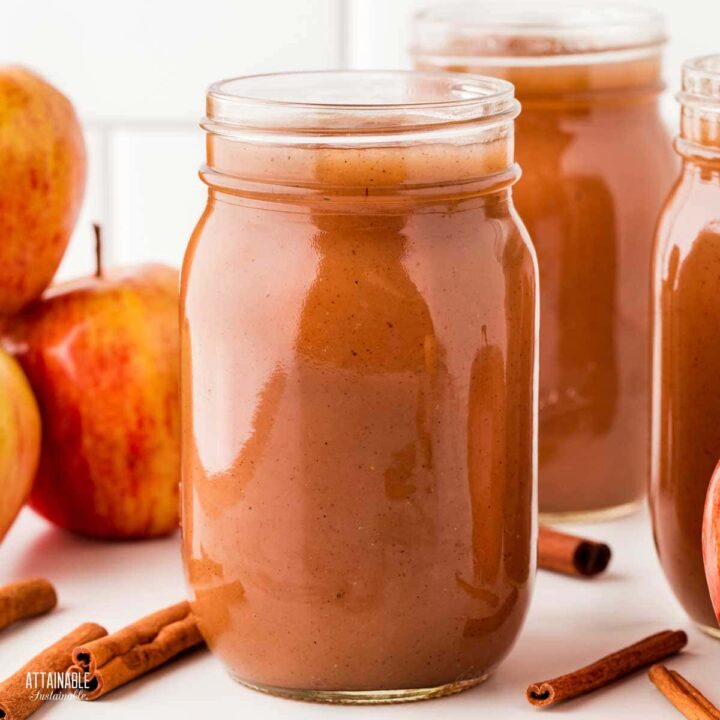
Old Fashioned Apple Butter (Canning Recipe)
With no added sugar, this slow cooker spiced apple butter recipe is a delicious way to preserve the flavors of fall.
Ingredients
- 12 pounds apples
- 3 cups apple cider
- ¼ cup apple cider vinegar
- 1 tablespoon cinnamon
- 1 teaspoon nutmeg
Instructions
MAKE THE APPLE BUTTER
- Peel, core, and quarter apples.
- Place apples and apple cider in a slow cooker or in a large stock pot.
- For slow cooker: Cook for 3-4 hours on high or until apples are very soft.
- For stovetop: Bring to a boil over medium-high heat. Reduce heat and simmer, stirring frequently until apples are very soft.
- Use a potato masher to break up chunks of apple.
- Working in batches, run apple pulp through a food mill, sieve, or chinois. Alternatively, you can use an immersion blender to create a fine texture.
- Return apple puree to slow cooker or cooking pot and add remaining ingredients.
- For slow cooker: Tilt cover to allow steam to escape. Cook for another 6-8 hours on low, or until apple butter is thick and holds its shape on a spoon.
- For stovetop: Simmer over low heat, stirring frequently until thickened. Apple butter should hold its shape on a spoon.
PREPARE FOR CANNING
- Wash the jars you'll use, making sure each is clean and free of nicks in the rim, which could impede sealing.
- Wash the lids and rings in hot soapy water. (If you're using non-Ball brand lids, prepare as suggested by manufacturer.)
- Place empty jars in a canning pot or large stock pot with enough water to cover by an inch or two, cover pot, and set on high heat to boil.
CANNING APPLE BUTTER
- Remove warmed jars from the canner and drain.
- Ladle hot apple butter into pint sized jars, leaving a quarter inch of headspace. A canning funnel makes this easy.
- Wipe jar rims to remove any fruit mixture that may have spilled. A clean rim is essential to a good seal.
- Place lids centered on the jar rim. Screw bands on finger tight.
- Use a jar grabber to gently submerge jars into boiling water in the canning pot. Water should cover the top of the jars by an inch. The water will cool somewhat in reaction to the addition of the jars. Return the water to a simmer and then set the timer.
- Process for 15 minutes 0-1,000 feet altitude; 20 minutes 1,001-6,000 feet; 25 minutes over 6,000 feet.
- Remove jars from water using the jar lifter and transfer to a solid, towel-covered surface. Listen for the popping sound of the lids sealing (a canner's favorite sound!). Allow to cool for 24 hours.
- Check seals. Lids should be solid and pulled down tight. (if they flex and pop, the jar didn’t seal; put unsealed jars in the refrigerator and use those first).
- Remove rings and wash outsides of jars. Store in a cool dark place.
Notes
If you prefer a sweeter spread, you can safely add up to one to one and a half cups of white sugar (or brown sugar) to the recipe. I suggest tasting this recipe after it's fully cooked down before deciding to add extra sweetener; unless you're using really tart apples it shouldn't need much sugar at all.
This recipe measured at a pH under 3.5, putting it well into the “safe” zone for water bath canning.
Boiling lids or heating above 180°F as once recommended can damage the sealing compound.
SOURCE: Adapted from the National Center for Home Food Preservation's guide to making fruit purees. https://nchfp.uga.edu/how/can_02/fruit_puree.html
Nutrition Information:
Yield: 112 Serving Size: 1 gramsAmount Per Serving: Calories: 15Total Fat: 1gSaturated Fat: 1gUnsaturated Fat: 0gSodium: 1mgCarbohydrates: 4gFiber: 1gSugar: 3gProtein: 1g
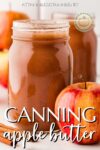
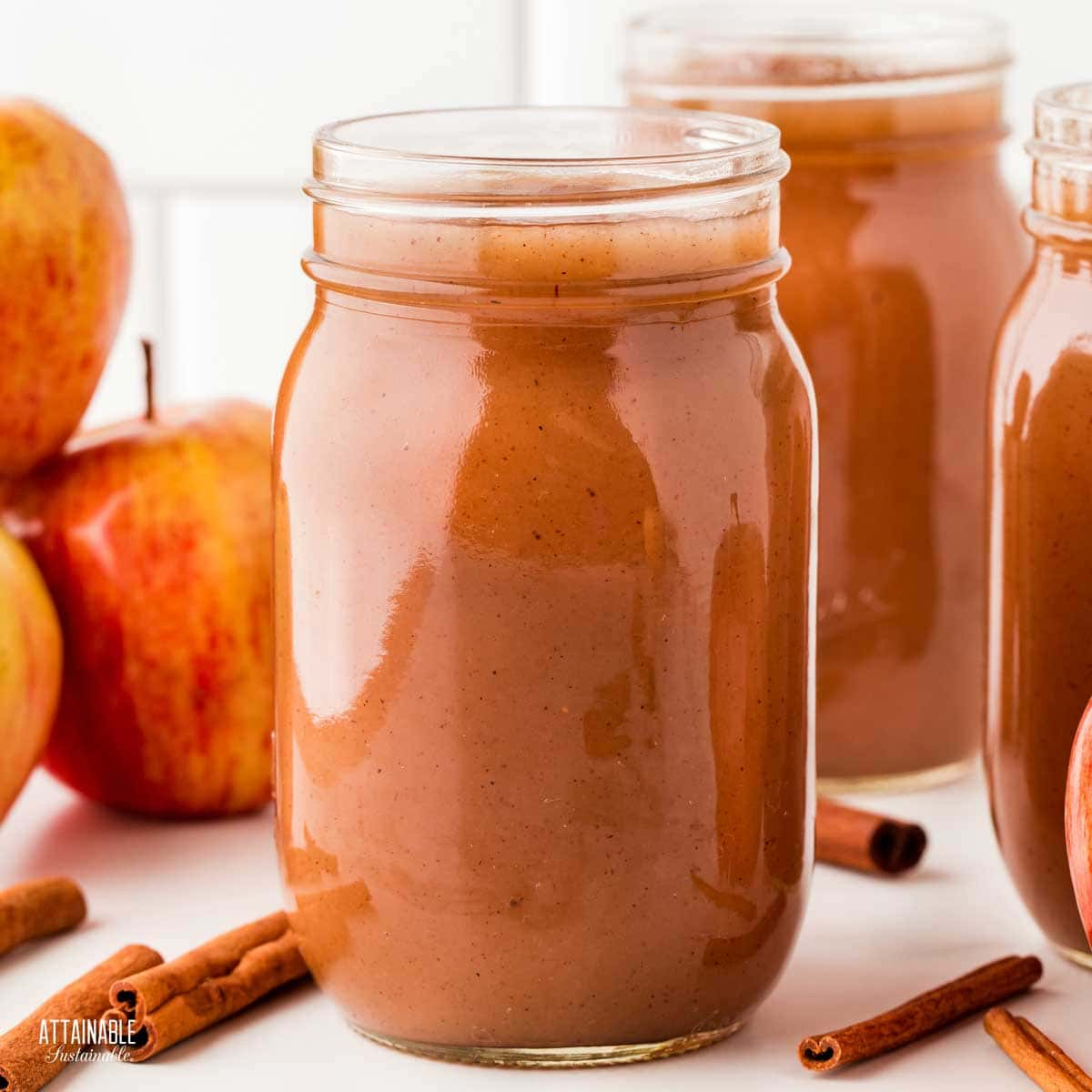
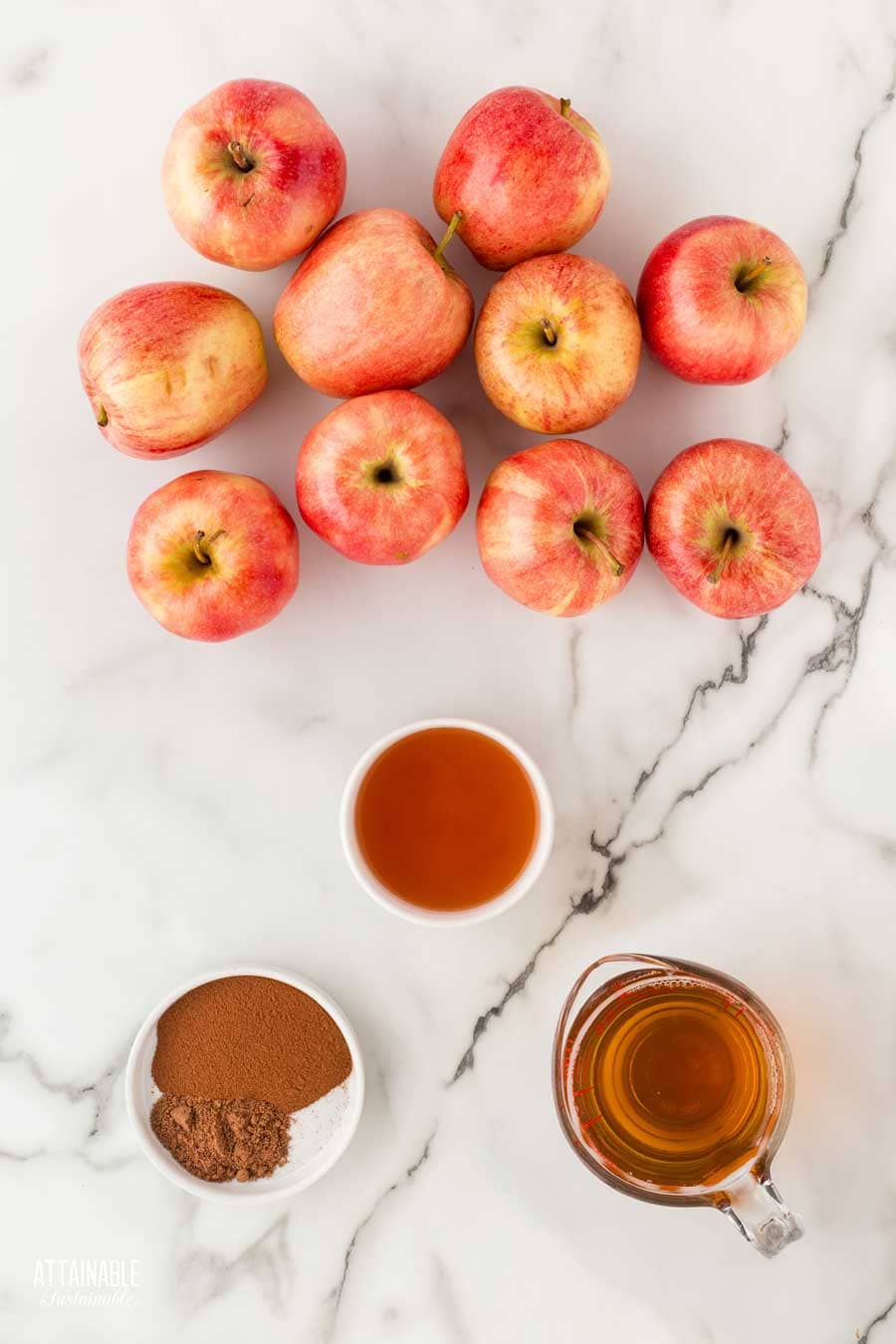
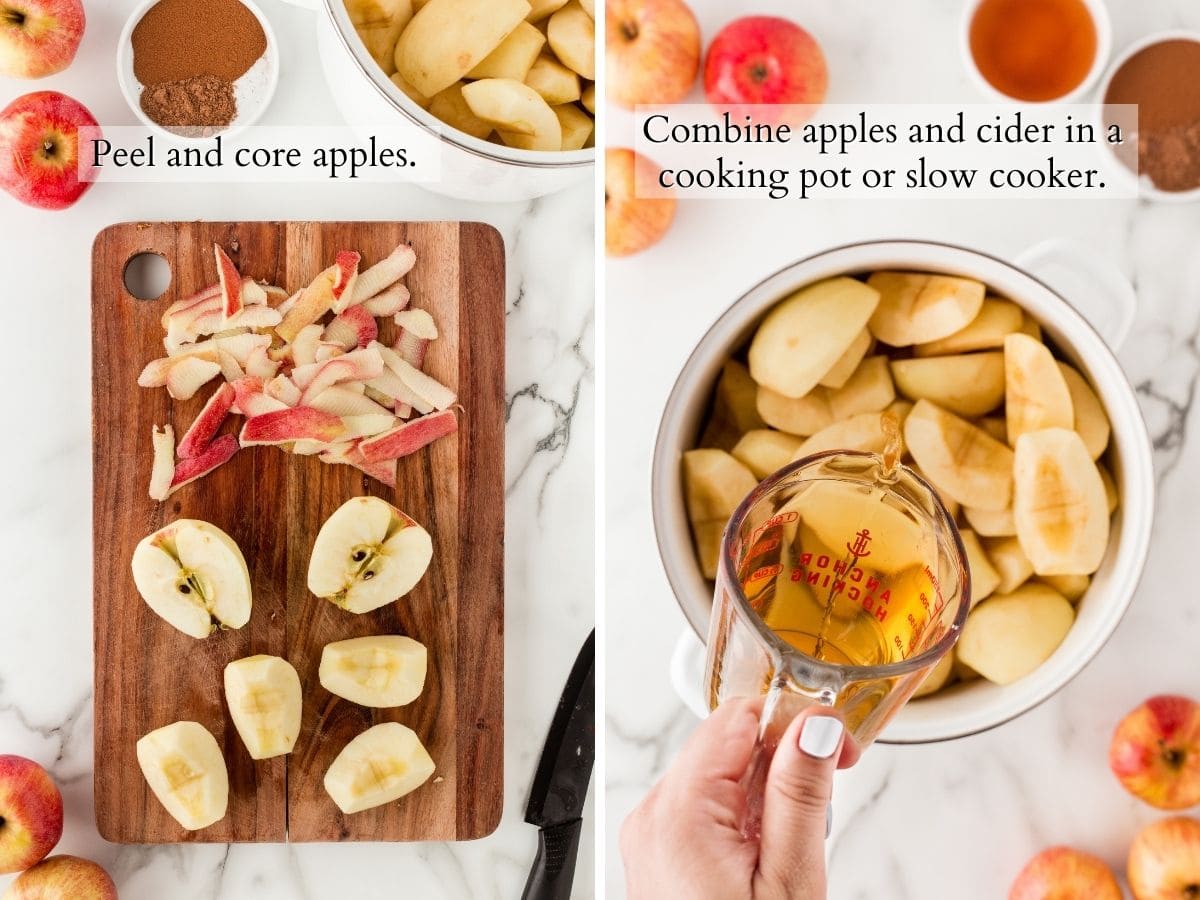
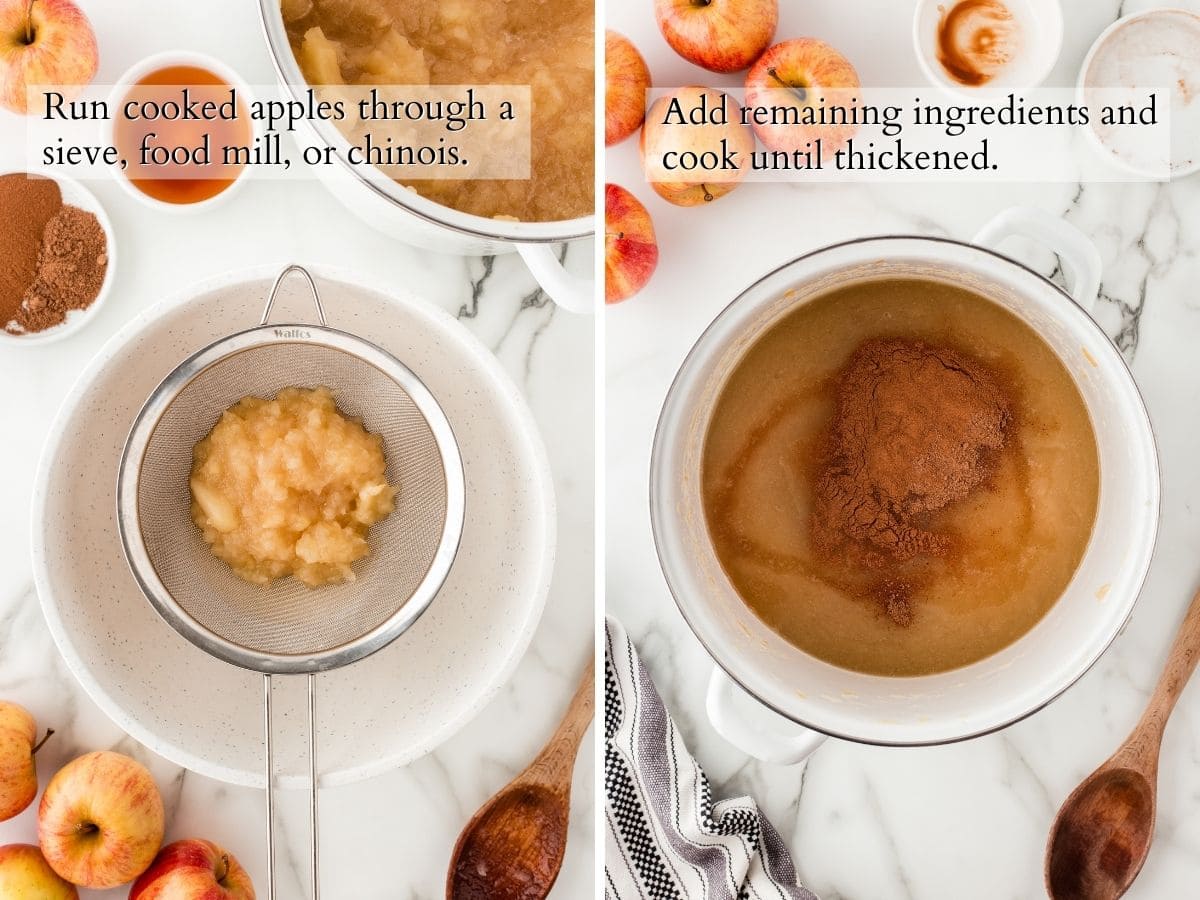
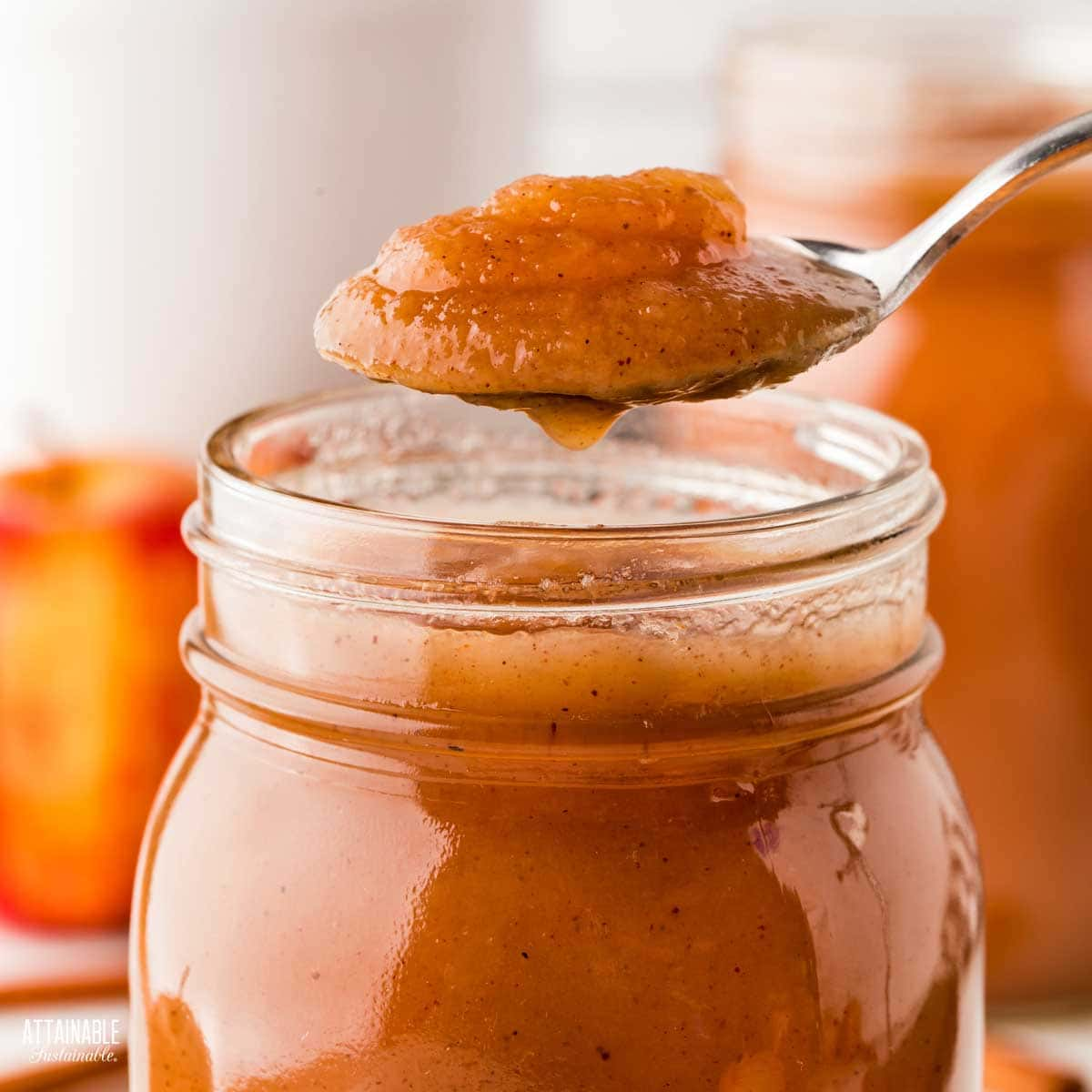
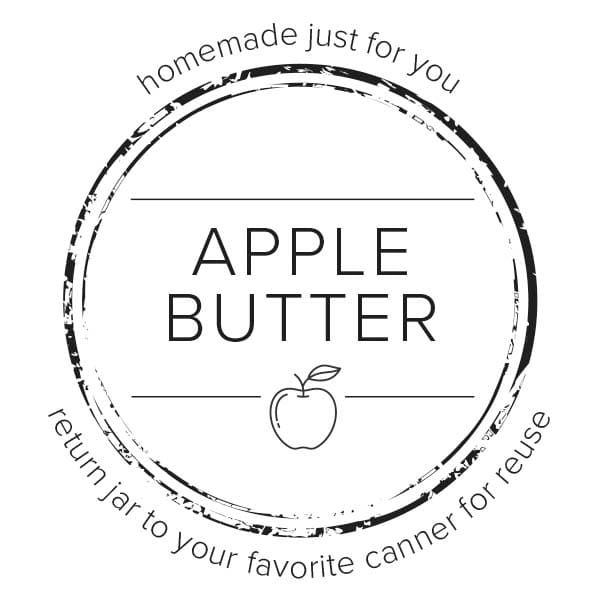
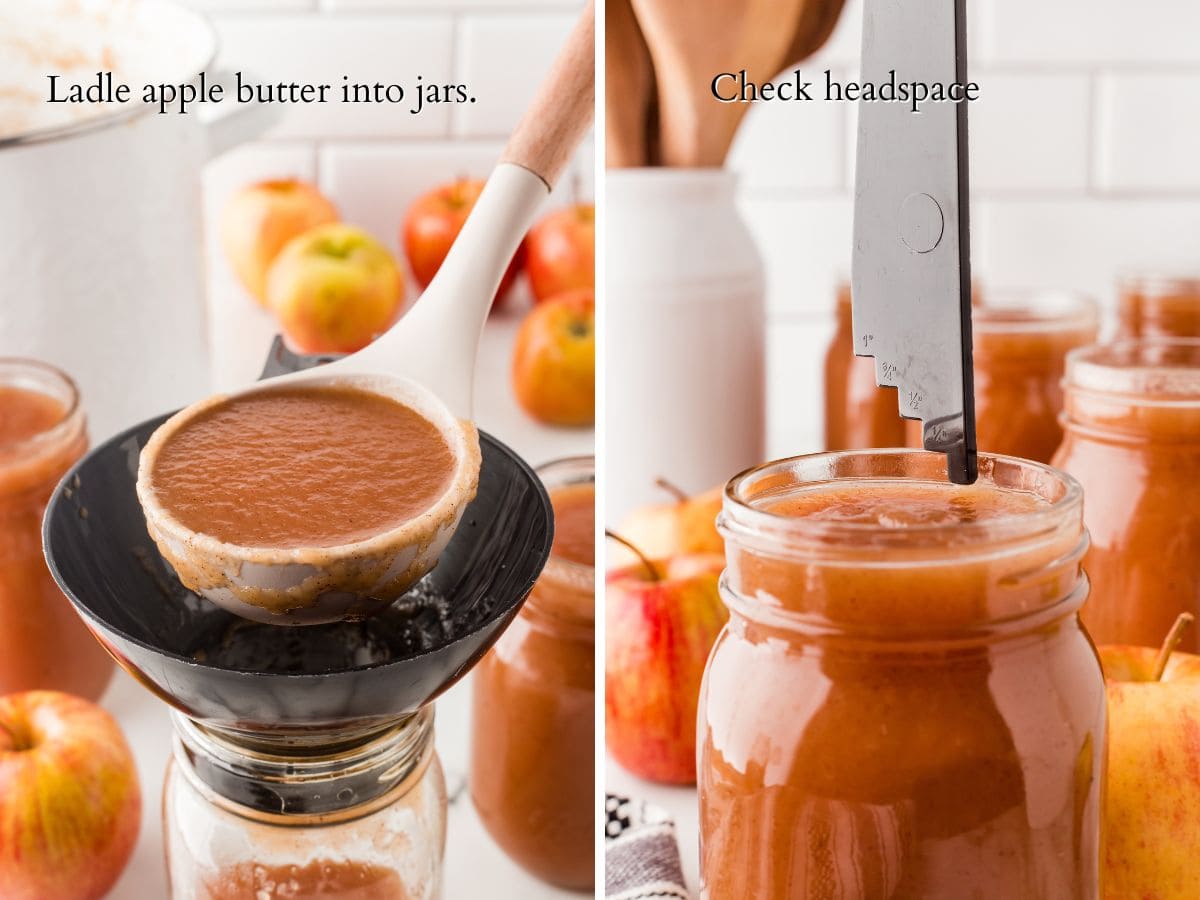
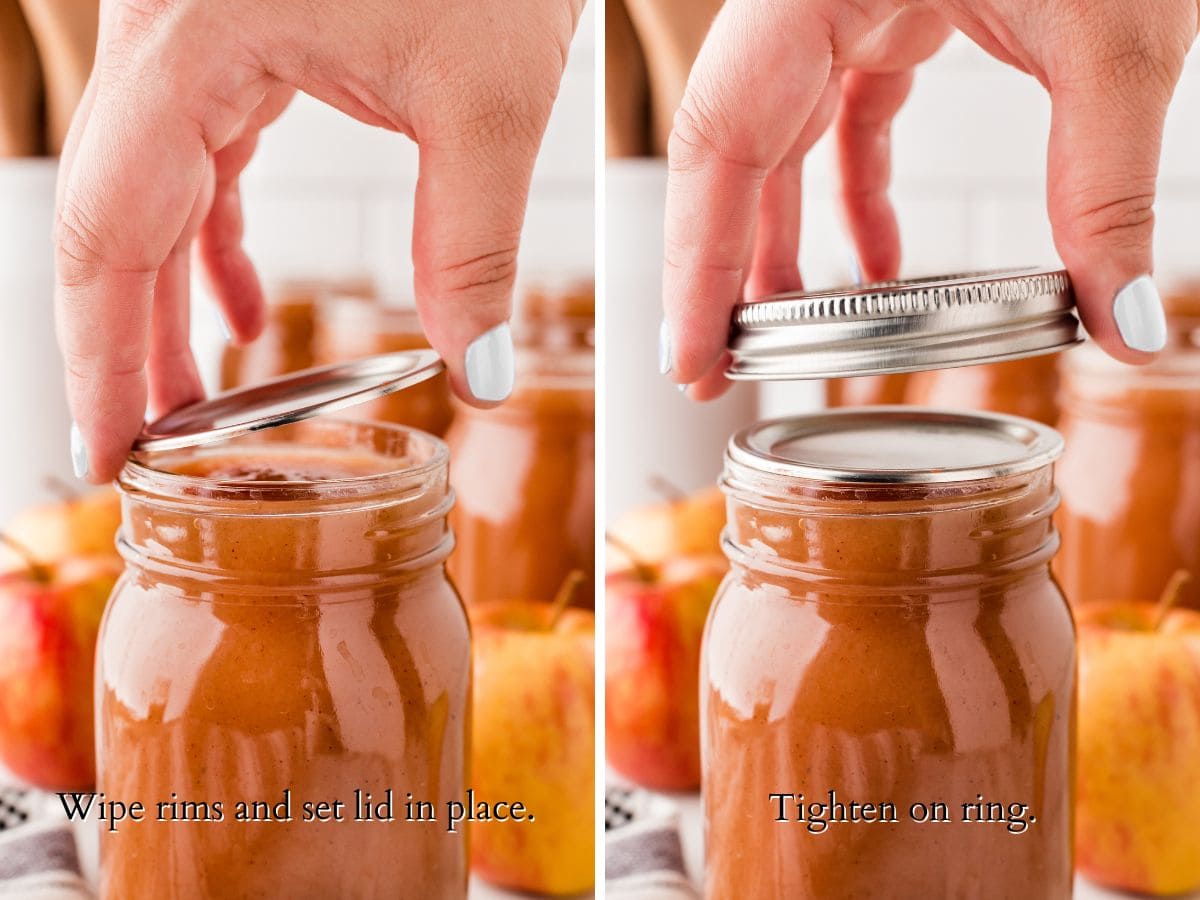
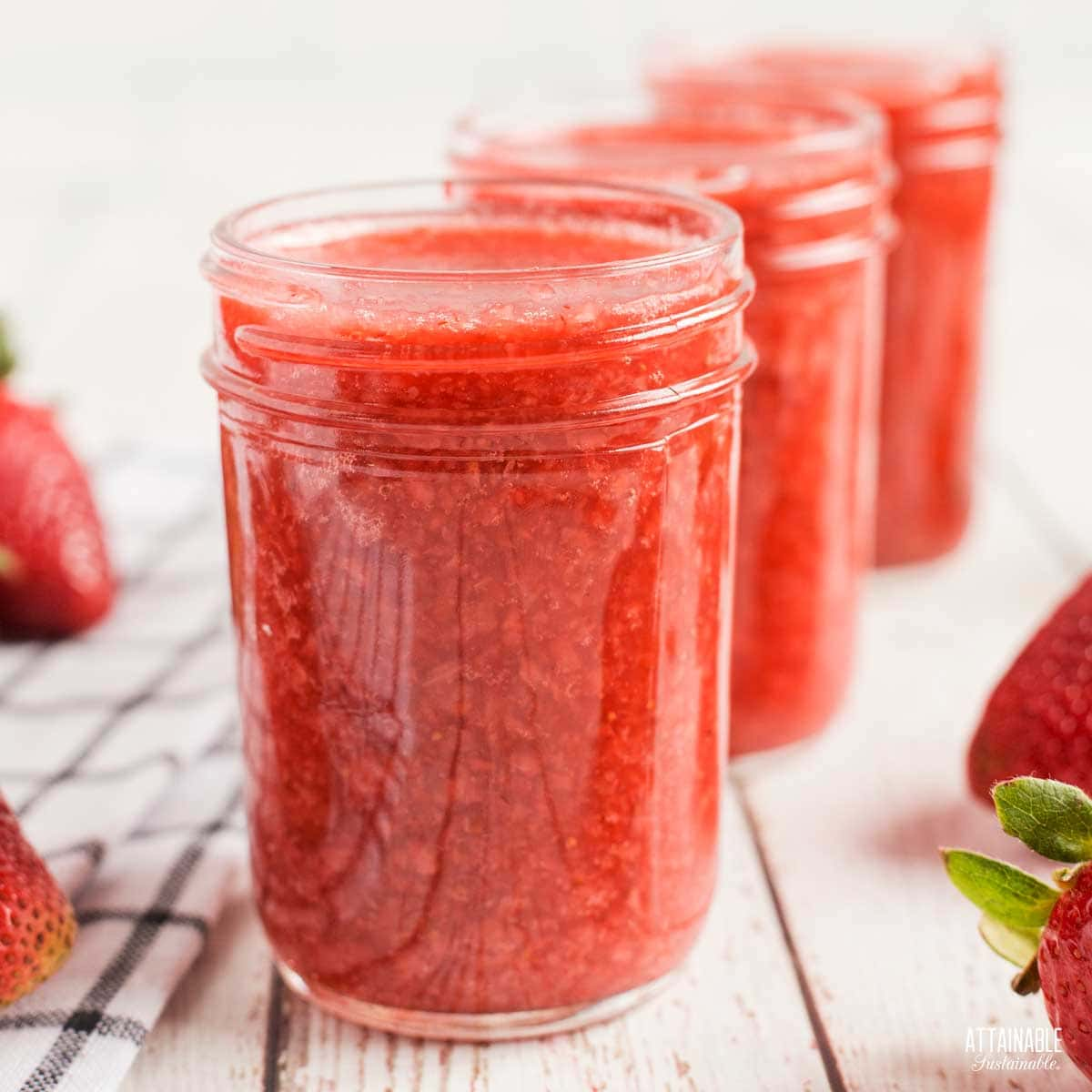
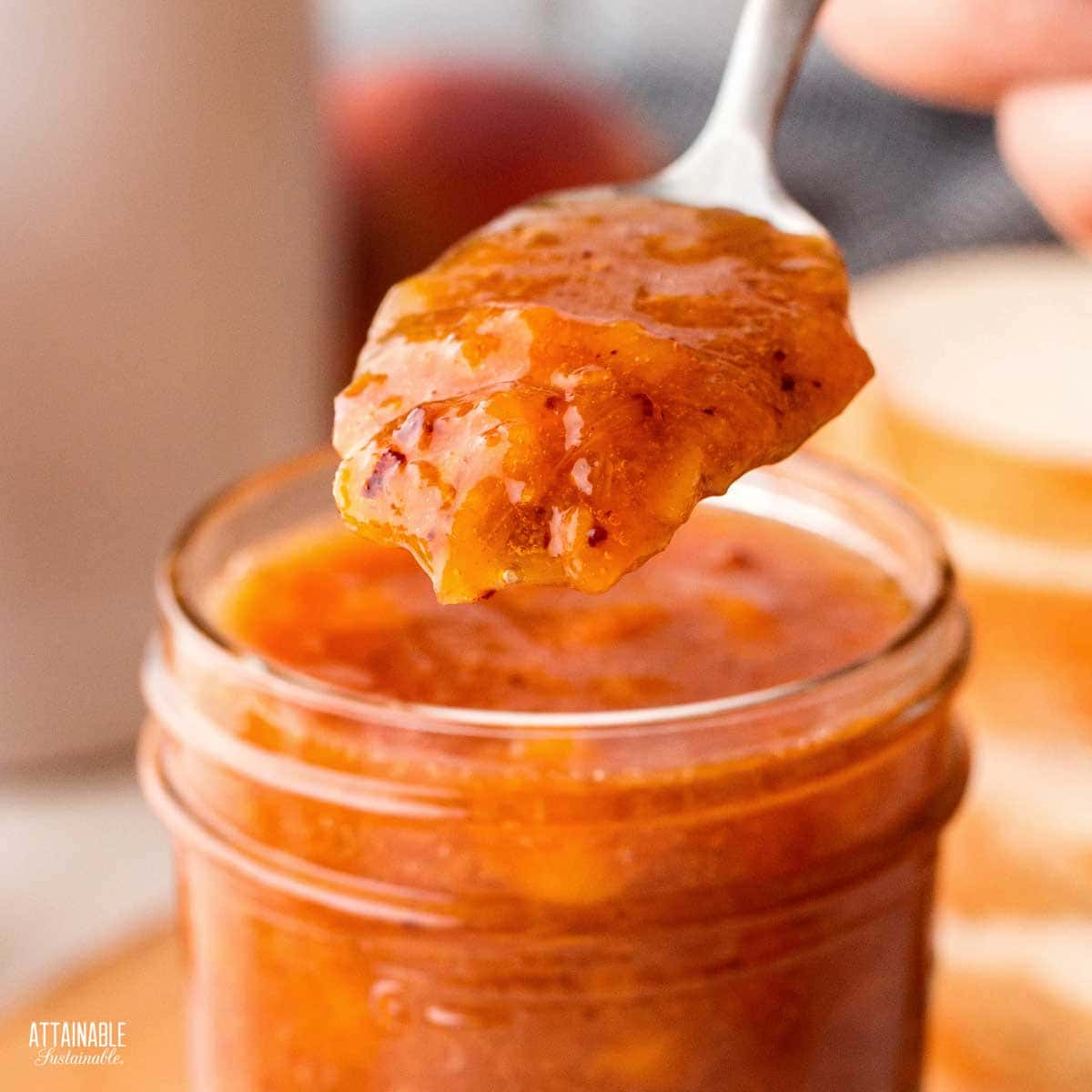
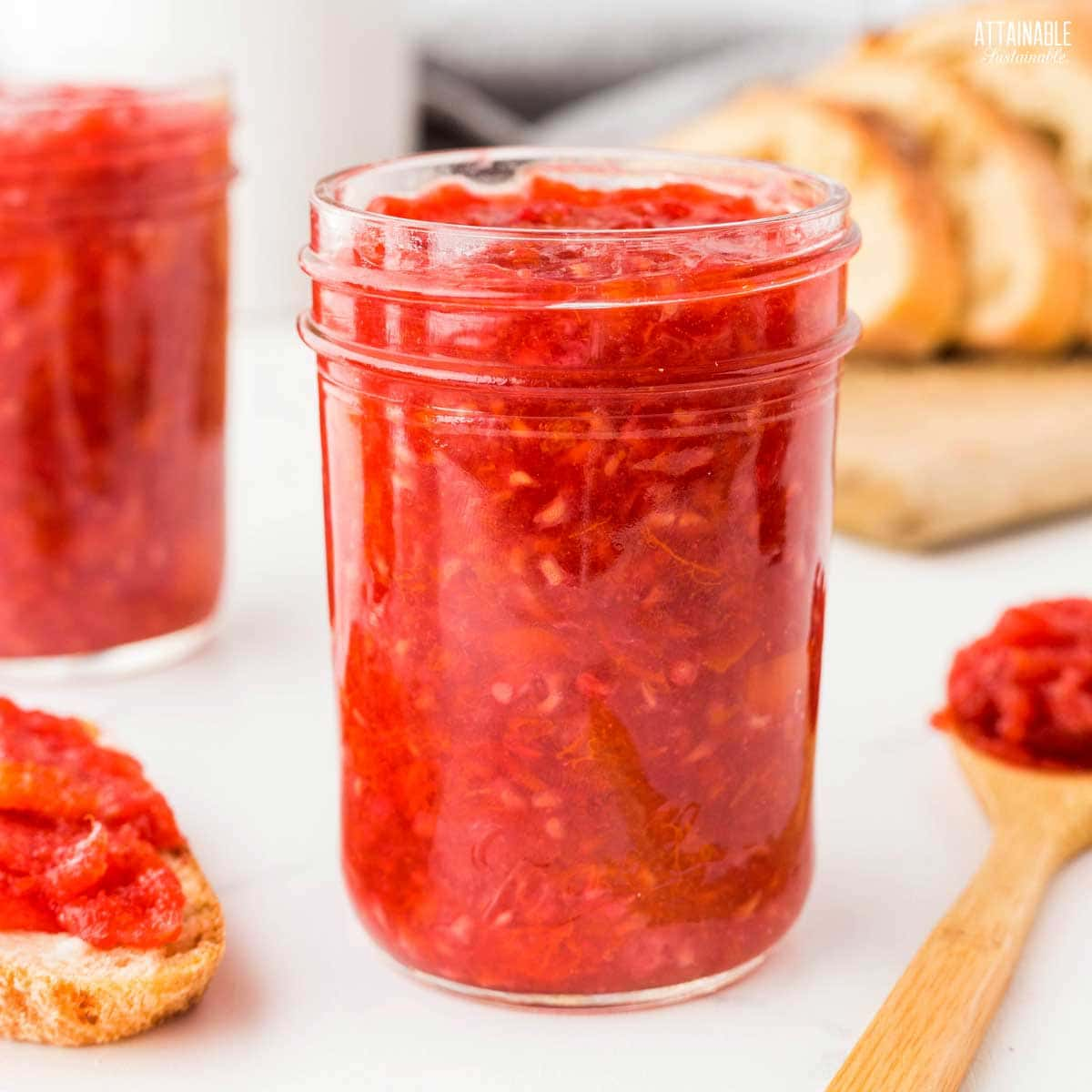
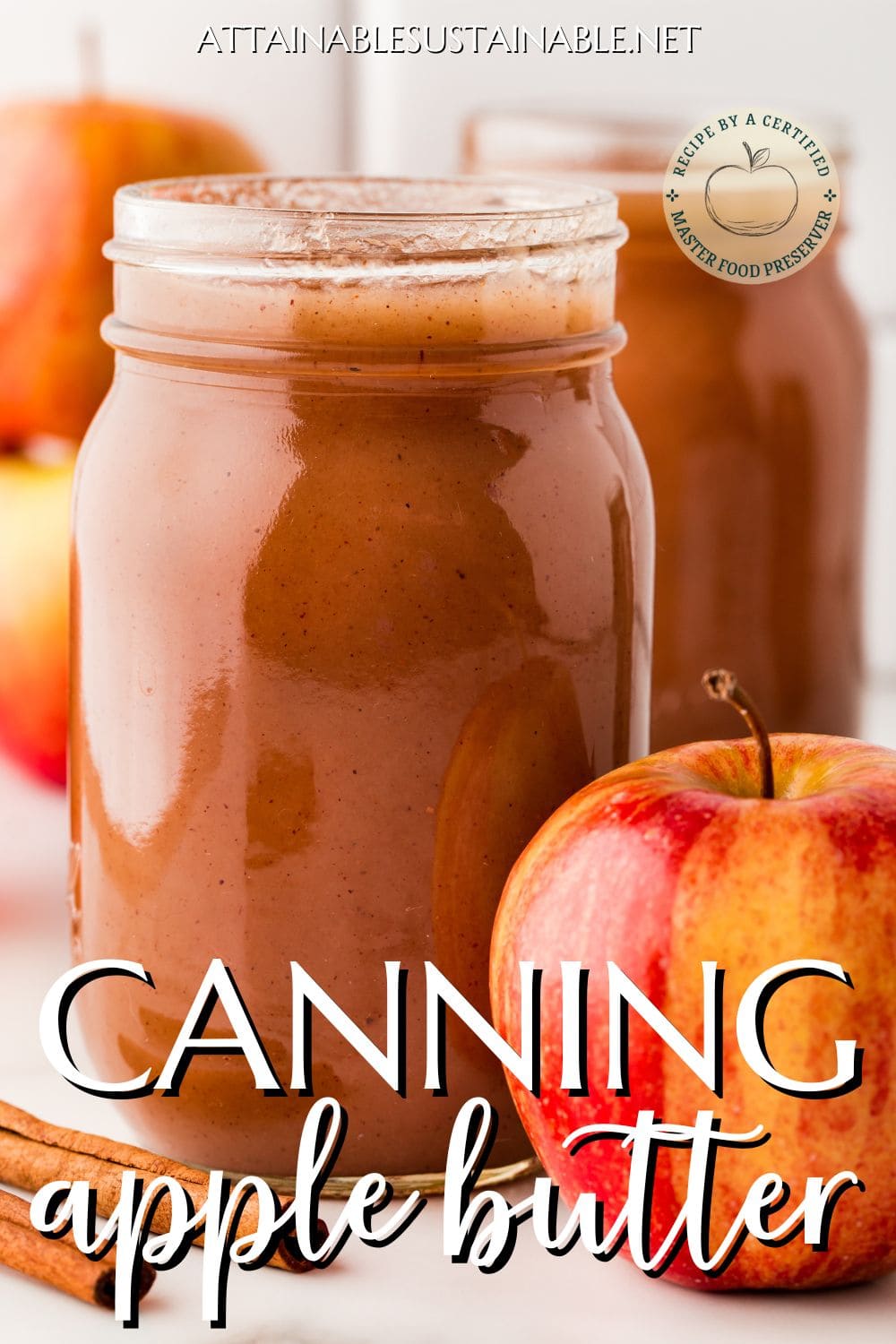





Any idea of how many jars that this makes??
It makes about 8 pint jars.
What kind of apples do you use
I use Gravenstein apples, but this recipe can be made with any type of apple. Golden Delicious apples and Gala apples will make a sweeter spread; Granny Smith apples will be a bit more tart.
I made this today and it was wonderful. I canned & water processed in 1/2 pints. This recipe is easy and tastes great.
Does this recipe freeze well? I’ve never made apple butter. I used to can A LOT now I prefer to do refrigerated pickles etc and will freeze sauces using my vacuum sealer bags.
This is a canning recipe, so I don’t usually freeze it. I think you could before canning though.
There is no step to remove warmed (hot) jars to counter to fill them…I assumed that they would be filled while inside the pot “to avoid the jars cooling off and avoid temperature shock when pouring hot apple butter into the glass jars”… I just need clarification here…Thank you for the recipe. Apples are just about ready to harvest.
Carol, yes, remove the jars from the water before filling them. I clarified in the recipe.
Published: July 18, 2023 Updated: January 9, 2022
Interesting! LOL
Hi there! I’m new and want to try this but wondering if I need to use pre-sweetened applesauce or if I can use the no sugar added kind. Thoughts?
I recommend making your own or starting with fresh apples as I explain in the post. Otherwise, the sweetener is up to your preference.
Just wondering what’s up with the nutrition information?
serving size: 1 GRAM?
ALL of your recipes list 1 gram as the serving size….this is TINY!!!
Like 2/10ths of a teaspoon tiny!!!! (from conversion chart: 1 g = 0.2 tsp)
Totally unrealistic!
PLEASE! give a realistic serving size for those of us who NEED to know certain nutrition measurements
Great recipe, though
Carol, it’s a glitch that is happening with the program I use. I’m slowly trying to fix this as I see them, but I’m only one person. Thanks for your patience.
New to canning.. Why do you have to add the apple cider vinegar to the applesauce to make apple butter? When I made applesauce I did not add vinegar to that batch first? And your recipe said I could use fresh apples without the apple cider vinegar in the recipe? Please advise. Thank you.
The original recipe that I’ve used for years called for the vinegar. I like the flavor! I need to make this again to test the pH *without, to know if it’s safe.
Okay, now that I have obsessed over your whole site.. I am so excited to try your homesteading ways out! My husband and I want to have our own homestead in the next 10 years! We are doing a lot of preparing/learning now so it will be a easier transition.
Thank you for this!
Glad you made your way here! This may give you some ideas while you’re waiting: https://www.attainable-sustainable.net/homesteading/
Hi Kris, Great idea to make apple sauce 1st and then process into apple butter. I’ve never made apple butter before but found a Victorio food strainer in our kitchen so no need to peel or core the apples just steam them, let them cool send them through the food strainer and them into the crock pot for apple butter. I also like the idea of no or very little sugar added, my apple sauce tastes sweet enough. I have an insta pot and crock pot going right now. One with apple cider vinegar and one without. Thank you for your ideas and example! Steve in PA